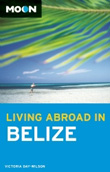Buying Property in Belize
Summary: Belize offers a straightforward process for foreigners to buy property, including beachfront and island properties, with specific legal requirements and tax considerations. The country has three types of property titles, each with its own legal implications and processes. Property prices vary widely based on location, size, and amenities, with beachfront properties being the most expensive.
Buying a Home in Belize
Belize's land laws are based on British law. Foreigners can buy and own land of any kind, including beachfront property. Approval from the Ministry of Natural Resources is required for the purchase of an island. All artifacts, whether found on private or public property, must be declared to and registered with the Archaeology Department. Government Sales Tax (GST) of 10 percent only applies to the first-time sale of a new or substantially renovated property. GST only applies if 60 percent or more of the property has been renovated. It can also apply to residential lots being sold for the first time in a sub-division. There is no capital gains tax in Belize. Property taxes are about 1.5 percent of the undeveloped land and are payable on April 1.
Title Ownership
There are three different types of titles to freehold property in Belize: Deed of Conveyance, Transfer of Certificate of Title, and Land Certificate. The Deed of Conveyance is the oldest form of title ownership and is a registered right to ownership of property. It can be converted to a Certificate of Title by applying for first registration. After that, any subsequent buyer will be issued with a Transfer Certificate of Title. A Deed of Conveyance is a valid legal title once an attorney has confirmed that the seller has legitimate title to the property. A Transfer Certificate of Title is a physical title to a particular plot of land. It is more expensive and time consuming to transfer the title on a Transfer Certificate of Title than on a Deed of Conveyance, but ownership is secure. A Land Certificate is an absolute title and applies to property purchases in new or specially designated areas. The government is in the process of re-registering all freehold lands under the Registered Land Act of 1987 to achieve an eventual uniform system of nationwide land ownership. However, this will take time, as some areas have to be re-surveyed. If they apply for it, Belizeans are allowed to hold land under leasehold from the government. After clearing the land and adding a structure, a Belizean can then apply for conversion to a fee simple title. Some Belizeans don't do this, so make sure your lawyer checks the title carefully and confirms the property is freehold.
Cost of Buying
If you're buying, location, size of the plot, whether there is a structure on it, access, and availability of utilities all play a large role in the price. A very rough guide -- and it does vary enormously -- is US $300 per acre; agricultural land runs US $500–3,000 per acre. Houses sell for US $25,000–750,000 or US $75– 150 per square foot. Beachfront properties can be around US $3,000–5,000 a foot, and beachfront building lots go for about US $100,000–200,000. In Cayo for example, a basic Mennonite prefab house without anything additional can cost around US $15,000–20,000; US $20,000 might buy you a half-acre building lot; small farms go for US $25,000–75,000; for US $30,000 you could buy a 15-acre farm with a basic house in a rural area; US $50,000 could get you a small concrete house; for US $125,000 you may get a 50-acre farm with small dwellings; US $250,000 could stretch to a nice 2,000-square-foot house or a 150-acre farm with a house; and for US $500,000 you should get a luxury 5,000-square-foot house on an estate.
Background Checks, Legal Issues and Cost
The buyer and seller sign a sales agreement on the price and any particular terms or conditions. A 10 percent deposit is fairly common. A title search should be carried out by a lawyer to make sure that the seller is the legal owner of the property, that the boundaries are correct (this is done at the Lands Office in Belmopan), and that there are no outstanding issues related to the property such as any liens, unpaid taxes, mortgages associated with it, or any claims on the property at some point in the past. This search will also reveal whether or not there are any forms of restrictive covenant or encumbrance on the property. The title search can take anything from days to weeks. The lawyer will also need to prepare the transfer documents, which vary depending on the type of property, but usually include the First Certificate of Title (the conversion of a Deed of Conveyance to a Certificate of Title once an attorney has confirmed that the seller has good title to the property), the Transfer of Certificate Title, the Deed of Conveyance, and Land Certificate. The transfer is usually accompanied by the original land title, recording or registration fees, and stamp duty. The cost of a lawyer is about 2 percent of the purchase price.
The buyer places the agreed sum in an escrow account which is released to the seller if and when both sides agree. Once the buyer has the papers, they are registered with the Land and Surveys Department; when a receipt is issued, the seller receives the payment. It takes a few weeks for the buyers to receive the new title in their name. Buyers have to pay a government stamp duty, which is 5 percent of the purchase price. The first US $10,000 is exempt. A registration fee for the new title deed is also required. This is usually US $15. The seller covers the property tax charges and the buyer pays for the stamp duty, recording of registration fees, and the real estate charge (if applicable). Title insurance is available here, but few use it. RF&G Insurance provides it.
Building and Restoring
If you're planning your dream house, think about how you will go about the construction. You can be involved or you can act as project manager and hire a foreperson, or you can bring in a building contractor. When you are thinking about buying a property or land in Belize, which you either want to restore or build on, make sure it's within your budget. Property may seem comparatively cheap here, but once you start building, the costs add up. It also depends on whether you buy imported or local goods. Many things are imported, as the market here is too small to support full industries. Even if you have a mental image of your dream home, drive around and see what other people have built; there are some interesting houses out there. If your property does involve building, try to do some calculations before you buy. If you need to put in an access road, electricity, or water, find out what the costs are. How flat is your land? Will you need to get a grader in to smooth a patch for your house? Will you need fencing? Think about things like water storage tanks, septic tanks, and water pumps. If you're building using wood, think about preservatives because you will need them: Some people use burn oil (used engine oil), which is probably the cheapest option; others buy protective varnish, which can vary hugely in price and the most expensive is not always the best. Speak to a building contractor and try to get rough costs, price things out in hardware stores, and go to timber yards. If you are using wood, another expensive item is the nails and screws for the wood. There's also wear and tear on the tools because the wood is so hard it will break nails and drills. If you're on the coast, maintenance costs will be high due to wear and tear from the elements. If your property is near water and you have a boat (or even if you don't), consider the cost of a pier or dock.
Sapodillo is a hardwood used for building and it is literally a very hard wood. It breaks nails, but lasts a long time, and doesn't get eaten as much by insects. You need to drill a hole in the wood, continuously moving the drill, and then hammer the nail in. Rough costs are $30 per 15-foot post. It's good for building and for fence posts. The bullet tree (aptly named) is another hardwood. The wetter it gets, the harder it becomes. Manchich is a hardwood that costs around $1.75 per board foot, so is Santa Maria at $0.175 per board foot. Teak is good for beams and costs about $1.75 per board foot. Tamay posts are good for using inside; as long as they don't get wet, they can last a long time. Negrito -- the black tree -- rots if it gets wet. Mahogany and cedar are good for door and window frames. Cement and tin are popular and durable. Tin roofing costs vary as it comes in different grades. If you are using thatch for your roof (nice but high maintenance), bay leaf palm is best, but you need a permit to cut it. It can last a few years. Cohune is cheaper but not very good. Electric wire is expensive, depending on gauge and place of origin.
You're likely to have more maintenance issues than you may be used to -- particularly with wood -- due to the elements, humidity, and an ongoing battle with insects. If wood is your material of choice -- and it does look nice -- listen to the locals and to expats who have been here for a long time. They can offer a wealth of knowledge and expertise, and can advise on what wood to build with and what to avoid. Many advise to use cement and then add wood facing to get the look. “Cement is king in the tropics,” one builder and developer said to me. If you are building storage for clothes or in the kitchen, try to keep it as open as possible in order to air the items, discourage hiding places for any insects looking to move in, and to avoid too much fungus. Keep checking regularly anyway. Leather is particularly susceptible to fungus. Consider open storage options in the kitchen so it's easy to clear away any unwanted insects.
From the book Moon Living Abroad in Belize by Victoria Day-Wilson. Excerpted by arrangement with Avalon Travel, a member of the Perseus Books Group. Copyright © 2012. For more information, visit http://www.moon.com. We also request that you link to the book detail page: http://www.moon.com/books/moon-living-abroad/moon-living-abroad-belize-second-edition.
About the Author
Writer, journalist, and photographer Victoria Day-Wilson grew up in the highlands of Kenya, East Africa, where her natural surroundings inspired her to develop a passion for photography. That's also where she began her career as a journalist, writing for national, regional, and foreign press. After almost moving to Spain, she ended up in England, where she continued writing and started working as an editor. She also spent a few years working in the Middle East.
After finding out that the UK wasn't quite her cup of tea, Victoria and her family gazed at a globe and decided that Belize’s climate, amazing fauna and flora, pioneering spirit, and sense of space and freedom made the country an interesting option. They found their dream property on the banks of the Macal River in 2006. She has since gotten to know Belize intimately, traveling the length and breadth of the country.
Today, Victoria splits her time between Belize, Kenya, and the UK.
Additional Information:
- Belize Guide
- Healthcare & Health Insurance in Belize
- Members Talk about Healthcare & Health Insurance in Belize
- Best Places to Live in Belize
- Real Estate in Belize
- Guide to Real Estate in Belize
- Pros & Cons of Living in Belize
- Cost of Living in Belize
- 15 Best Places to Live in Belize
- 8 Best Places to Live on the Coast in Belize
- Insider's Guide to the Health System in Belize
- Guide to Residency in Belize
- 2025 Guide to Living in Belize
- Pros and Cons of Living in Belize 2025
- 2025 Guide to Moving to Belize
Comments
guestThis is a very old article. GST has been 12 1/2 % for several years now.





